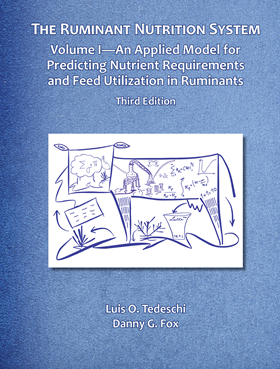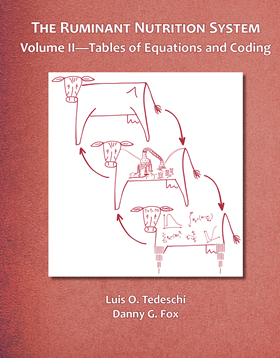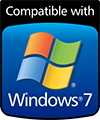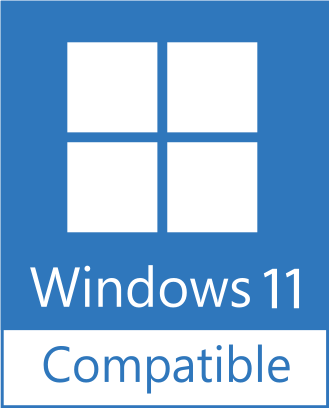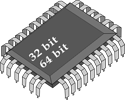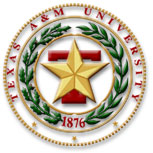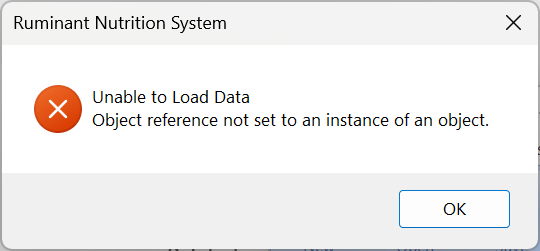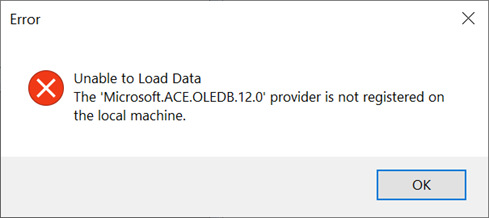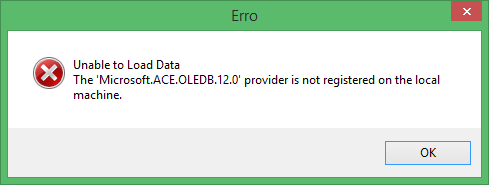
The Ruminant Nutrition System has two volumes now. To facilitate the dissemination of the computer model, we are publishing An Applied Model for Predicting Nutrient Requirements and Feed Utilization in Ruminants (RNS) as Volume I (the "blue" book) and the Tables of Equations and Coding (TEC) as Volume II (the "red" book) of The Ruminant Nutrition System publications. You can get the latest books as hardcover or paperback editions from Amazon.com (Volume I and Volume II) or XanEdu.com (Volume I and Volume II).
The first edition of The Ruminant Nutrition System: An Applied Model for Predicting Nutrient Requirements and Feed Utilization in Ruminants was published in October 2016. Since then we have received much positive feedback, which has encouraged us to revise and expand it. In the second edition, we updated concepts and added new information, clarified and enhanced the discussions of important topics, included new and improved and standardized existing graphics and illustrations, rearranged some of the text, and included indexes for subjects and authors. Although we believe the second edition of The Ruminant Nutrition System was a lot more inclusive and complete, we were always seeking for new ideas and how to implement them. At that time, some branches of sciences were experiencing rapid progress because of their economic relevance, as well as the pace of their development and application of novel technologies. One example of such progress was the ability to manipulate microorganisms genomically to produce biofuel more efficiently and in a more sustainable way. In 2016, researchers successfully added a laccase, or lignin-degrading enzymes, from the aerobic bacterium Thermobifida fusca into a designer cellulosome, a multienzyme complex structure commonly found in anaerobic bacteria. The resultant chimera had the ability to degrade cellulose, hemicellulose, and lignin simultaneously. This use of laccase may be an early example of the rapid application of this long-known enzyme in biofuel production and other industries, such as pulp and paper and crop biotechnology. Applications of such technology in ruminant nutrition could yield enormous benefits not yet realized, even though its adoption may not happen in the near future. This technology may eventually change the way we understand indigestible dietary compounds. Rapid scientific developments such as this pose an interesting challenge for nutrition modeling. They require nutritionists to be constantly aware of discoveries and determine how to adopt them in the livestock industry. It is imperative that nutrition modeling follow the same pace of technological evolution and be responsive to new breakthroughs.
Since the publication of the second edition of The Ruminant Nutrition System: An Applied Model for Predicting Nutrient Requirements and Feed Utilization in Ruminants in January 2018, we have continued to receive encouraging feedback from readers around the world. We learned that The Ruminant Nutrition System book has been adopted as a textbook for advanced courses in ruminant nutrition and modeling. In the third edition, we have thoroughly revised the text, equations, and illustrations for correctness and clarity. Virtually every page had a modification. Sometimes we made a minor correction, but sometimes we rephrased a whole paragraph or updated an illustration. There are also a few new textual additions. We wrote new sentences to corroborate or supplement the text, highlight pertinent findings from recent research, and provide additional information and clarification while, as much as possible, maintaining intact the structure and pagination of the second edition. We changed the background color of all equations to improve their visibility within the text. We also revised and updated the references by reducing their font size and adding the digital object identifiers when avail-able. There are 2,427 references in the Volume I (the "blue" book). Artificial intelligence, a data-intensive computational process, has received growing attention in the last decade, more specifically the machine learning and deep learning approaches. Because farms have been developing large databases, artificial intelligence has gained some traction in agriculture. The publicity around artificial intelligence promotes it as a solution for real-world problems, which may reduce the interest in mechanistic modeling. However, the integration of mathematical modeling and artificial intel-ligence is likely to spur an avant-garde technological wave in predictive analytics, resulting in a paradigm shift in the mathematical modeling domain. This shift will be so great that in the near future we will likely be using hybrid knowledge- and data-driven models. With this in mind, our goal is to make the information in The Ruminant Nutrition System book and the associ-ated computer model ready for integration with artificial intelligence. Since we started writing the first edition of the Ruminant Nutrition System, we planned to include the computer model’s equations and the calculation logic. The book, however, quickly became a comprehensive document of the published research used to identify essential equations and variables for the under-lying calculation logic of the RNS model. It was a rich, dense source of information about the biology and nutrition of ruminants and the mathematical modeling concepts behind the computer model. As a result, we scattered the RNS model equations throughout the book, within the appropriate chapters containing the pertinent scientific discussions, sometimes making it difficult for the reader to reconstruct the computer model. Soon after the publication of the first edition of the book, readers wishing to see the RNS model equations, their linkages, the calculation logic, and how they were implemented into the computer software started requesting more details. To meet this need, we needed to produce a companion book focused on describing the RNS model’s equations and code. Before releasing it to the public, however, we had to make sure that the equations accurately reflected the concepts (i.e., the validation step in mathematical modeling) delineated in the RNS’s Volume I. The RNS’s Volume II – Tables of Equations and Code (the "red" book) arose because of our commitment to document and disseminate the mathematics composing the RNS model clearly and in detail. Each part of Volume II presents the RNS model’s equations and the calculation logic in two ways. The first, more traditional approach lists the equations in a tabular form, including an equation number, the independent variable with its description, and a mathematical formulation (in the form of the equation) that follows a logical sequence for calculation and execution. The second approach embeds the equations into a modern, highly aggre-gated method of an actual computer programming language structure, the R script. This second approach presents the sequence and the calculation logic for the equations more systematically and coherently than the first approach for those wishing to understand how the RNS calculations were programmed.
UPDATES: The latest errata for Volumes I and II can be downloaded here. The latest versions of the RNS for R Scripts (*.ZZZ or *.ZZX files) can be downloaded from here.
The RNS software uses published equations and model structures as listed below:
- Equations published for the Cornell Net Carbohydrate and Protein System (CNCPS) for cattle and sheep by Fox et al. (2004), Tylutki et al. (2008), Tedeschi et al. (2008), and Cannas et al. (2004, 2005; 2007);
- Nutrient requirements of goats (Cannas et al., 2007; Tedeschi et al., 2010);
- The body reserves model developed by Tedeschi et al. (2006);
- Nitrogen cycling model developed by Lanzas (2006);
- Feed carbohydrate and protein fractionation systems developed by Lanzas et al. (2007);
- A revised rumen submodel that includes:
- A volatile fatty acids (VFA) submodel adapted from Pitt et al. (1996);
- Ruminal passage rate submodels developed by Seo et al. (2006); and
- Prediction of microbial requirements for branched-chained amino acids as described by Tedeschi et al. (2000).
- Model structures that include:
- RNS for R, which has an extra capability to execute R scripts that quickly add customized calculations, high-quality graphics, reports, and advanced simulations such as stochastic modeling;
- Added capability to communicate with ExtendSim® in order to perform dynamic, continuous calculations; and
- Four levels of solution for predicting supply of energy and protein, as follows:
- 0 - User-inputted values for total digestible nutrients (TDN) and ruminally-degraded protein (RDP) for each dietary ingredient;
- 1 - Level 1 supply as described in Fox et al. (2004) with some modifications described in Tylutki et al. (2008);
- 2 - Level 2 as described in Fox et al. (2004) with some modifications described in Tylutki et al. (2008);
- 3 - Dynamic prediction of rumen VFA production and pH; and
- 4 - Stochastic modeling of key variables using R
- Future additions will include:
- Energy spilling and obligated amino acid fermenting bacteria pool (J. B. Russell, personal communication)
The RNS is being designed to meet the needs for the following applications: (1) teaching, (2) research, and (3) decision support system for use by field-oriented, consulting nutritionists.
 |
Click here to start a tutorial on how to use the Ruminant Nutrition System. |
Comments about The Ruminant Nutrition System book:
“…it is an impressive work and very useful for student and also for more experienced scientists. I hope to have sometimes time to read it thoroughly and extracts ideas for improving Karoline model… Congratulations of such impressive work.”––Pekka Huhtanen, Professor; Swedish University Agriculture Science, Sweden. November 2016.
“… this book is a great achievement and is definitely the most advanced available on nutritional modeling and feeding systems. It is much more complete than the sum of the various NRC books and it provides a lot of new and integrated information. What I liked a lot is your ability in explaining all the biology behind the phenomena, and linking it to the many mathematical models described and their development over time. The introductory historical part is also unique, I am not aware of any other similar description of the integrated history of nutritional models. All this will be extremely valuable for many categories of scientists and professionals: researcher specialized in the area of nutritional modelling, researchers in ruminant nutrition with focus on other areas, Master and PhD students, whom will find a lot of knowledge, documentation and inspiration to develop their own research, professional that want to understand what they do.”––Antonello Cannas, Professor; University of Sassari, Italy. January 2017.
“Congratulations on a task very well done. I have cracked open your new book and only wish I could go on vacation from my day job for a few years to digest all of the scientific knowledge you have poured into it… I know and have an appreciation for all the hard work the both of you plus others within your teams have done thru the years and to get it documented and made available for others to use and learn from has to be very fulfilling and rewarding. Job very well done… I did a quick analysis of approximately how many cattle we have sorted with your models thru the years starting in 1994… It would be safe to say over 10 million head sorted with various versions of the Cornell Value Discovery System (CVDS) under our multiple packaged processes… That is a fair sum of money your base scientific technology has put in our clients pockets thru the last 24 years… I know many other business entities are using your work in various production systems. You and your associates have had a huge positive impact on the efficiency of production within the cattle industry… We (PCC, PCC clients, and our business partners) have identified numerous research and development projects we plan to develop with your models being a key element of technology packaged processes for commercial cattle operations. We plan for the processes to be simple to implement, run at the speed of commerce, improve production efficiency, produce high quality beef and add more profitability to the enterprise. (My simple definition of Sustainability)”––Max D. Garrison, DVM, CEO; Performance Cattle Company, LLC, Amarillo. March 2017.
“This book provides an excellent reference to the structure, philosophy and history behind the original Cornell Net Carbohydrate and Protein System project and its further evolution and expansion into the Ruminant Nutrition System. This effort successfully integrated knowledge from a wide variety of distinguished scientists and disciplines into a cohesive framework around which animal scientists can extend their understanding and apply the embedded concepts to real world situations. The significance of that achievement cannot be overstated, and in my humble opinion, this work describes the agricultural equivalent of the Manhattan project. While the mathematics in some sections may not be for the faint of heart, this book represents a comprehensive ‘state of the art’ of our current understanding of ruminant nutrition in very fine detail. Even the most seasoned of animal scientists will not be able to get through this book in one pass, not so much due to difficulty, but because it serves to stimulate the generation of new ideas to move the science forward in such a positive way.”––Michael C. Barry, CEO; AgModels LLC, Tully, NY. April 2017
Drs. Tedeschi and Fox have “broadened the Cornell model and integrated it with related fields of biology, a nutritional system with wide application in the nutritional sciences.”––Peter J. Van Soest, Professor Emeritus; Cornell University, Ithaca, NY. September 2017
“The Ruminant Nutrition System is an exceedingly worthwhile tool for all scientists interested in physiology and nutrition of ruminants. It is highly recommendable for teaching and research of graduate students at the master and PhD levels in animal sciences, but also in life sciences, wildlife and fisheries sciences, ecosystem sciences and management, veterinary medicine as well as biology and zoology. Moreover, the book will also be valuable to practicing nutritionists who are looking for advanced information on applied ruminant nutrition and wish to understand biological and nutritional modelling of nutrient requirements by ruminants and nutrients supplied by feedstuffs undergoing ruminal fermentation, postruminal digestion, and nutrient absorption.”––Gerhard Flachowsky, Professor; Federal Research Institute for Animal Health, Braunschweig, Germany; September 2017.
|
|
|
|
The RNS requires 32-bit Microsoft Access Database Engine 2010 to be installed in the computer. You may download the appropriate Microsoft Access Database Engine 2010 Redistributable setup (free of charge) that is compatible with your computer (click here to download Microsoft Access Database Engine 2010 Redistributable). See SUPPORT if this does not work. The RNS is programmed with the Microsoft Visual Studio 2017 using Visual Basic and .NET 4.7.1 framework. Users should download the .NET framework 4.7.1 using the web installer or the offline download. It uses R scripting v. 3.x technology or later (Click here to download R) to perform advanced simulations, customized calculations, and high-quality graphic production. Additional simulations can also be performed through ExtendSim® RunTime. In order to execute RNS for R the following R packages have to be previously installed: XML and Tcl/Tk. Even though RNS will try to install them automatically (need internet connection), you may install them manually by following these steps:
|
|||
The current version of the Ruminant Nutrition System is 0.9.8778.28618
![]()
PREVIOUS versions of the RNS and RECENT versions of the RNS for R Scripts can be downloaded from here. The RNS for R Scripts have extensions .ZZZ or .ZZX.
The RNS will expire after 10 trials if not registered by the end of the grace period. You can register your copy by submitting the registration number in the Register webpage. If applicable, registration codes will not be given out until the cost of registering your copy is paid in full at the Purchase webpage.
March 25, 2024. First ERRATA for the first edition of "The Ruminant Nutrition System" book (Volume II). Click here to download it.
December 3, 2023. The 2007 and 2010 Microsoft Access Engines are required to access the feed library database and perform database manipulations. If you receive the warning message below, close the RNS and other programs to avoid loss of data, download this ZIP file, and install the three files in sequence: Setp 1, Step 2, and Step 3.
November 10, 2023. The Ruminant Nutrition System (RNS) requires .Net Framework 4.8.1. If your computer does not have it, you can install if from Microsoft .Net Framework site.
August 30, 2021. First ERRATA for the third edition of "The Ruminant Nutrition System" book (volumes I and II). Click here to download it.
February 27, 2020. The 'Microsoft.ACE.OLEDB.12.0' provider is not registered on the local machine error occurs, as shown below.
Download the Microsoft Access Database Engine 2016 Redistributable from our website and install it with the option /quiet, using the CMD, as follows: C:\[DOWNLOAD FOLDER ]\AccessDatabaseEngine.exe /quiet. Alternatively, download it from Microsoft website.
June 24, 2018. First ERRATA for the second edition of "The Ruminant Nutrition System" book. Click here to download it.
June 18, 2018. Adding a short path (a.k.a., short name) to a user name folder in Windows 10. As described on the November 11, 2017 note (below), users may receive an error when the user name folder does not have an equivalent DOS 8.3 short name. Users cannot simply add a short name to a user name folder because it is protected by Windows. Here is an workaround that works.
- Create a temporary administrator user account using the Control Panel and User Accounts
- Restart the computer, and login on this temporary user account
- Restart the computer on minimal safe boot mode, using MSCONFIG
- Start CMD as administrator, using Win+R
- Go to the root of the user name folder you want to add the short name, usually "C:\Users\", using "cd c:\users"
- Type "fsutil 8dot3name set 0" to enable the creation of short names
- Type "fsutil file setshortname 'USER NAME' USERNA~1" to create the short name to the folder "USER NAME"
- Type "dir /x" to show the folder and file names in the users root
- Restart the computer on normal boot mode, using MSCONFIG
- Login to the old "USER NAME" account, use the visual basic script shown in the November 11, 2017 note (below) to verify if the short name was set correctly
- Delete the temporary user account, using the Control Panel and Users Account
More information on the use of fsutil can be found at https://ss64.com/nt/fsutil.html.
November 11, 2017. When executing RNS for R, the following error occurs: "'fsutil' is not recognized as an internal or external command, operable program or batch file." This problem usually happens when there is no short path (DOS equivalent naming of 8.3) assigned to a folder, usually the username folder in Windows (C:\Users\UserName). This is a problem associated with Windows; the following links describe this problem.
- https://manjusullad.wordpress.com/2016/01/06/how-can-i-find-create-short-path-for-windows-folders-directories/
- https://ss64.com/nt/fsutil.html
- https://github.com/coreybutler/nvm-windows/issues/41
- https://superuser.com/questions/681330/how-to-force-short-name-8dot3-generation
- The following Visual Basic Script (.VBS) shows the short name of any file/folder
Set fso=CreateObject("Scripting.FileSystemObject")
If fso.FolderExists(WScript.Arguments(0)) Then 'Folder
Set objFolder = fso.GetFolder(WScript.Arguments(0))
ok = InputBox("Short path:", "SHORT PATH", objFolder.ShortPath)
End If
If fso.FileExists(WScript.Arguments(0)) Then 'File
Set objFile = fso.GetFile(WScript.Arguments(0))
ok = InputBox("Short path:", "SHORT PATH", objFile.ShortPath)
End If
October 22, 2017. Second ERRATA for the first edition of "The Ruminant Nutrition System" book. Click here to download it.
February 25, 2017. First ERRATA for the first edition of "The Ruminant Nutrition System" book. Click here to download it.
March 20, 2017. The CPU Usage crashes.
This is a problem with the registry of the performance counters of your computer (more information here). The RNS provides two Visual Basic Scripts that might fix this problem. Execute the "FixPerfCtrl.VBS" located in the "C:\Program Files (x86)\TAMU\RNS". You must have administrative privileges to execute this VBS.
April 10, 2015. The 'Microsoft.ACE.OLEDB.12.0' provider is not registered on the local machine error occurs, as shown below.
On 64-bit Windows and 64-bit Office (2010, 2013) environments, there are many reports on this error. The fix or workaround is a bit strange but seems to work for most people out there. If this error persists, even after installing the Microsoft Access Database Engine 2010 Redistributable, then instead try installing the 2007 Office System Driver: Data Connectivity Components (Source1, Source2).
UPDATED (April 2019). Apparently, the link to the 2007 Office System Driver: Data Connectivity Components is not working. Click here to download the zipped drives. Unzip the file, firstly install the "1-AccessDatabaseEngine_2007" file and secondly install the "2-accessruntimeanddataconnectivity2007sp3-kb2526310-fullfile-en-us" file, and then restart the computer.
INSTALL 32 bit version of Microsoft Access Database Engine 2010 Redistributable. Uninstall 64 bit version if previously installed. The RNS connection manager is trying to use the ACE OLE DB provider in order to access the Access file when the version is above 2007. Although your computer is 64-bit, you’re using SQL Server Data Tools, which is a 32-bit application. There is no 64-bit version for SSDT. When you design your package within SSDT, you’re using a 32-bit process, which can only use 32-bit providers. When you try to choose the table in the Access file, the connection manager needs to access the 32-bit version of the ACE OLE DB provider, but this provider is not registered on your machine, only the 64-bit version is installed. You should download the 32-bit version of the “Microsoft Access Database Engine 2010 Redistributable”. When you try to install it, you might get an error message. You should first uninstall only the 64-bit version of the “Microsoft Access Database Engine 2010 Redistributable”, which you probably installed previously. The 64-bit version and the 32-bit version can’t live together on the same host, so you’ll have to uninstall (through “Program and Features”) and install the other one if you wish to switch between them. Once you finish uninstalling the 64-bit version and installing the 32-bit version of the provider, the problem is solved, and you can finally choose the table within the RNS feed library file. The RNS connection manager is now able to use the ACE OLE DB provider (32-bit version) in order to access the Access file. (Source3)
Parameter Change. The form below is used to request a code to unlock the parameter values in the Ruminant Nutrition System settings page. After unlocking it, the user is able to change the parameter values. This code is provide under specific conditions only.
- The latest books are available as hardcover or paperback editions from Amazon.com (Volume I and Volume II) or XanEdu.com (Volume I and Volume II).
-
The CNCPS manual is a PDF file that contains the description of the model, tutorial, and the equations used to develop the model.
-
The Cornell Net Carbohydrate and Protein System web page.
-
The Cornell-Penn-Miner (CPM) Dairy web page.
-
The AMTS web page.
|
